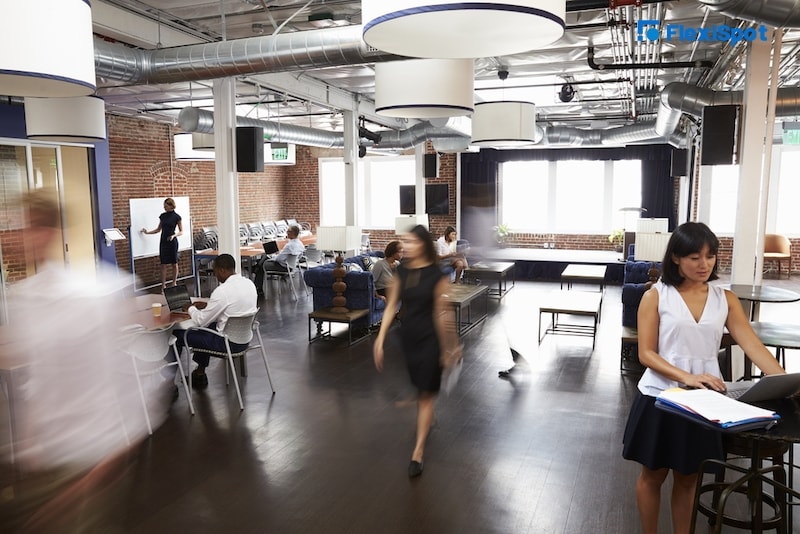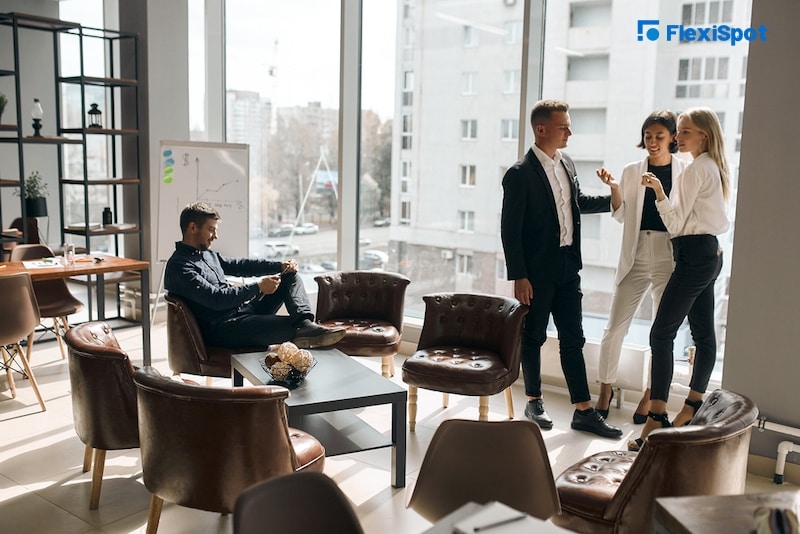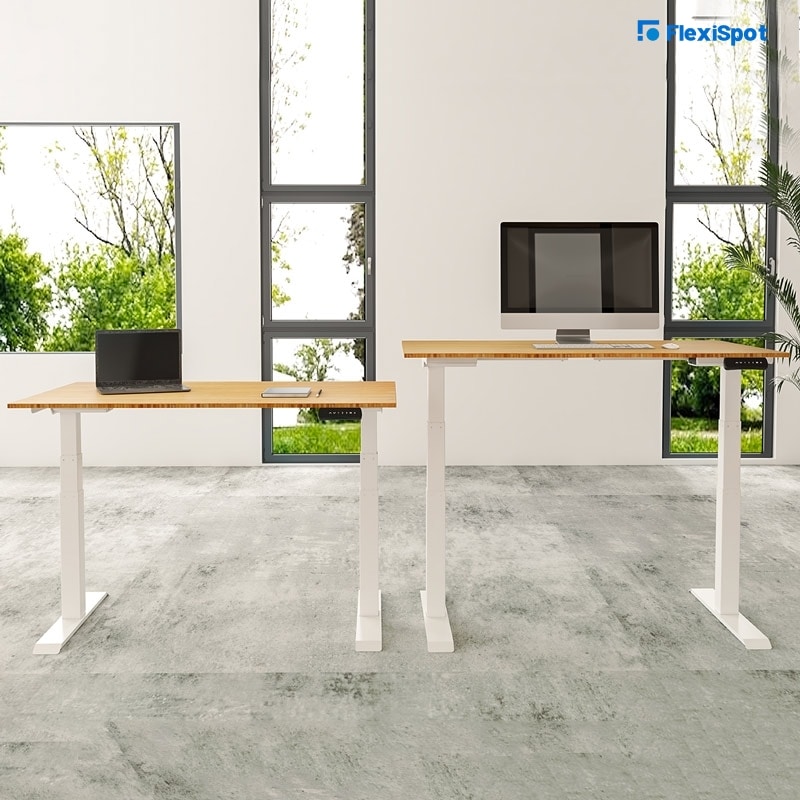The current office design trends blend the beautiful with the practical in new and fascinating ways, shifting away from designs just for the aesthetic. Many current designs aim to boost productivity and employee engagement by enhancing cooperation, attention, and efficiency in response to changing requirements. In this post, we'll go over 5 comfortable and functional workplace designs trends, as well as a description of several types of flexible working spaces.
In this post, we'll go over 5 comfortable and functional workplace designs trends, as well as a description of several types of flexible working spaces.

Flexible and Future-Oriented
The first workplace design trend is a flexible, future-oriented design.
Regular office spaces are built to be used indefinitely. For today's business concerns, this paradigm is no longer applicable. Workspaces that are modular and adjustable are a viable option. Today's dominant workplace design trend is adaptability for today and the future. Flexible workspaces make it simple to adjust to changing individual, project, and corporate requirements. It's a great answer for a fast-changing environment where many critical roles didn't exist ten years ago, and employers struggled to foresee the work roles they'll want in the future.
It's simple to incorporate modern technologies with flexible space and adaptive furnishings. This extends the life of your workstation investment. Modularity is also a good match for Gen Z and Millennials employees' social, team-oriented work cultures. For example, mobile furniture that can be combined in a variety of ways allows for a more dynamic, participatory environment. It's an innovative trend that shows no signs of slowing down.
It's an innovative trend that shows no signs of slowing down.

Blended and Activity-Oriented
The second workplace design trend is blended activity-based workspaces.
In social, cooperative situations is where the newer generations thrive. Nonetheless, privacy and attentiveness are still required. An appropriate solution may be found in open floor designs with a range of useful zones. The second workplace design trend is based on the concept of mixed-use space. Open, private, and semi-private workplaces are all available in blended offices. This maximizes the advantages of each kind of area.
Blended spaces, also known as activity-based design, are often flexible and adjustable. Workstyles and duties are divided and defined in blended offices. One or even more common spaces, conference rooms, open-air breakout areas, and informal sitting groups are found in most contemporary offices.
The following are the most prevalent forms of zoned spaces:
Multipurpose Workspaces
Multipurpose workspaces allow for simple interaction. Conference rooms, huddle areas, project rooms, and unassigned workstation seating are examples of these places. Personal workplaces with circular workstations and communal tables are also appropriate. Smaller sizes are becoming more popular. The popularity of huddle rooms continues to eclipse that of regular conference rooms. According to statistics, 75% of conference rooms are currently constructed for four or fewer persons. The ability to link rooms or open areas is another rising trend, recognizing the continuous necessity for certain bigger facilities.
Lounges
These inviting settings encourage spontaneous cooperation in a relaxed atmosphere. Lounges, the contemporary workplace's social centers, have become a recognized zone for mind-to-mind discussions across project groups and departments.
Client Lounges
Several organizations provide distinct lounge-style facilities to enable more relaxed client and visitor interactions.
Personal Workspaces Are Constricting
Personal workplaces have shrunk as a result of increased mobility, smaller technology, and the prominence of huddle areas. Personal workplace size decreased from 300 sq. ft. per worker in 2001 to 225 sq. ft. in 2012. It is projected that further shrinking would reduce it to a meager 100 sq. ft. per person.
Privacy Pods
Within open workspaces, these private rooms offer a calm haven for concentration. They're often positioned in strategic locations to eliminate background noise and disruptions from passers-by.
Companies are giving quiet zones as part of an activity-based workplace design amid the bustle of collaboration-minded workspaces. These zones reflect a wish to avoid casual chat and focus without distractions.
Centers for Collaboration
Two-thirds of today's employees feel they are more productive when they collaborate with others. Companies can boost engagement and productivity by equipping collaborative zones with the right acoustics, furniture, and technology.
Neighborhoods
In terms of workplace design, hierarchy is no more a defining feature. For space allocation, the function has replaced the job title. Forward-thinking businesses are expanding on this notion by dividing personnel into large zones. The idea is to persuade people to stop thinking of the area as "my space" and start thinking of it as "our space," resulting in a feeling of belonging in a special work environment. Designers recommend employing unique lighting, furniture, and colors to give each area its own distinct aesthetic character.
Zones Are Color-Coded
Companies are increasingly employing color to identify and arrange functional zones inside workplaces, harnessing the power of colors to improve pleasure, productivity, and creativity.

Designing for Wellbeing
The evidence keeps piling up; without a doubt, our environment has an impact on our health. For many firms, designing for wellness is a major priority. According to multiple studies, long periods of sitting are a serious health risk; it's been said that sitting for too long at work is considered the new smoking. Natural light and other aspects of nature, on the other hand, may promote health and productivity.
One solution is to create settings that encourage mobility throughout the day. Standing desks in the workplace can really enhance your physical and mental wellbeing. Sit-stand desks are beneficial to one's general health and may help to alleviate neck, back, and shoulder problems. They've also been demonstrated to lower stress levels and increase productivity.
Stairs, restrooms, and lounges should be placed away from workstations to promote activity. It's the same concept as parking on the far end of the parking lot.
The wellness movement includes biophilic design as a subcategory. Natural materials, light, vegetation, and vistas are included in the architectural design. A good example is the popular plant wall. Don't be deceived. This isn't just a fashion fad. Biophilic design has been shown to increase productivity and creativity. It's a comfortable and functional workplace design trend that has the potential to have a significant impact on company performance.

Employee Representation
Recruiting and maintaining great employees is a major challenge for every company. Millennials, in particular, are looking for locations to work that complement their way of life. This often entails occupations with stimulating, enjoyable, and pleasant working conditions. Common places and delectable food options are popular features. There are additional outdoor break places, workout rooms, and leisure opportunities on the list. Modern furniture and cutting-edge technology might also influence an applicant's decision. These elements, when combined, provide the sense that companies care about their workers' wellbeing. For a large portion of the talent pool, the workplace design trend may make or break their career choice.

Technology Integration
It's not like technology isn't used in the job. The current tendency is to design workplaces with digital-based corporate processes and technology. The amount of cables that come with technology is a major worry. According to one designer, a major customer worry is getting rid of cords and clutter from PCs and conference rooms.
Companies are also looking for ways to share material more easily. Device-agnostic collaboration for hassle-free conference participation is a major problem. Employees may get down to work fast by incorporating technology into their surroundings.
In terms of office design, wasting numerous hours for meetings is a major challenge. Specifically, the time spent preparing for a meeting. The commercial advantages of videoconferencing can only be realized with proper integration.
It's critical to get set up without having to tinker with equipment. While designing furniture, workstations, lounges, and huddle spaces, connectivity and setup must be considered.
Some popular integrations of technology in the workplace include:
Built-in data and power
Integrated charging
Interactive displays
Articulated monitor arms
Easy-to-connect technology touchpoints
Table-top touchscreens
Wireless streaming dongles
In Conclusion
When you are planning your workplace's new look, you have to consider a lot of small factors that will contribute to the overall productivity and efficiency of the place. Your employees can benefit greatly if you opt for comfortable and functional workplace designs that enhance their work experience.